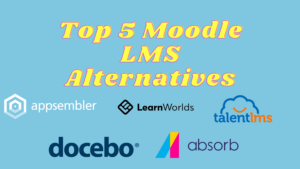In a recent podcast with OpenView Venture Partners titled “Developers, Developers, Developers…and Marketing,” Francesca Krihely, Senior Director of Developer Experience at Snyk, spoke about how to build and engage a developer community. Krihely spent nearly eight years at MongoDB — a document-oriented database program — where she was instrumental in pioneering and scaling their developer community, which became one of the largest and most vibrant communities around.
In this podcast, Krihely explains the strategies and tools MongoDB used to build their developer community, and discusses the importance of documentation and user experience. With a wealth of experience in the space, Krihely provides tons of practical advice and tips for raising awareness and turning users into brand ambassadors. If you don’t have time to listen to it all, take a look at our summary of the key points below.
Raising Awareness and Displacing Incumbents
When Krihely joined MongoDB, the founders were focused on maintaining developer awareness and growing developer adoption. It was that focus that helped propel MongoDB’s successful 2017 IPO that valued the company at $1.2 billion (Source).
At the time, MongoDB’s biggest competitor was the relational database. Oracle and Microsoft and IBM were the dominant players, and getting people to change platforms was tough.
“It’s been around for over 40 years, millions of people around the world use it, people are certified in the relational database, they teach it in college,” says Krihely. “And so the switching costs are really high.”
The challenge for MongoDB was to show developers that there was another option that they could use when building specific types of applications. To raise developer awareness of the other options, MongoDB focused on social proof.
“All startups find themselves in a position of needing to convince the market that they should care about their product,” says Krihely. “This is even more difficult if you aren’t just marketing a new version of an incumbent, but a new way of thinking about a problem or technology. In the case of MongoDB, a new way of thinking about databases. This requires a heavier lift and underscored the need for social proof within developer communities.”
The initial principle behind the community and go-to-market playbook for MongoDB’s developer marketing initiative was that social proof was the most effective tool they had. That’s why they focused on building channels where they could showcase customer and user stories. This then led to MongoDB organizing and attending a lot of developer-focused events.
“It worked really well because a lot of people found out about us either at big industry trade shows or because they — or somebody else — attended our events and awareness spread through word of mouth,” says Krihely.
From Users to Ambassadors
Alongside organizing events, MongoDB launched an ambassador program. This helped the company mobilize their biggest and most credible fans to participate in events, create content, and spread developer awareness. They also set up a Meetup program.
“One of the most ubiquitous things in the developer world is the Java user Meetup group. We wanted to emulate that,” explains Krihely. “So we started with the goal of let’s find organizers in these 10 key cities and help them grow their membership, ensure that they do at least four to five meetups a year. And then we evolve to have hundreds of groups. How do we make this scale? And, what do we do to help the organizers do that? That was how we leveraged the concept of social proof and found different channels for it.”
As a result, events became a central focus for driving interest in customers and engagement with them. MongoDB could continue to rely on customers as being a source of their net new leads. But it wasn’t just events and community that powered their success with developers. Krihely also credits MongoDB’s product design and innovation, the sales organization and model, and support from the founders from the start.
Providing A Frictionless User Experience
Time is precious with developers, which means you need to make it as frictionless as possible for them to reach a live experience of your product. If you add in gates and make it difficult to access and understand your product, developers will go elsewhere.
According to Krihely, the first five minutes of any developer product should be seamless, easy to understand, help someone accomplish a problem, and help the user see the value.
“A lot of the systems that developers use are complicated; they need to think about how they integrate,” explains Krihely. “I think that’s why there’s so much opportunity in the space. Building products is actually very challenging and making systems work together is very difficult. So, if you can do anything you can to make your product easier and more enjoyable to use than the competitors and than what developers are used to, you’re winning a lot in that category.”
The Importance of Documentation
To educate themselves about your product, developers need to read copious amounts of uninterrupted documentation. Documentation provides prescriptive advice that developers rely on to get things done and it makes highly technical and complicated products much easier to understand.
“If you don’t invest in your docs, you’re cutting your growth and you’re making it much harder for yourself.” says Krihely. “I personally love Auth0’s documentation. It’s built-in, it’s definitely designed for developers, and they segment their documentation into different programming languages. It makes it really easy for developers who use different languages in their applications to find what they need in order to get started. Developers sometimes are very much tribal in their information gathering because they do use specific programming languages for specific projects. So, they do gravitate towards programming language specific content.”
Finding What Makes You Stand Out
According to Krihely, figuring out tactics and strategies for marketing to developers was not the only hard part. Figuring out the principle of growth was also a real challenge.
“But I think the hard part is not figuring out the tactics,” says Krihely. “I think the hardest part is figuring out what’s our first principle of growth. What helps us stand out in this market and how can we use that to achieve? Then once you have that, the tactics, the content, the going to events, organizing events, things like that become a lot easier to figure out.”



